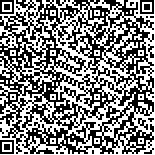本文已被:浏览 3911次 下载 8322次
投稿时间:2015-10-20
投稿时间:2015-10-20
中文摘要: 半个世纪以来,空间科学不仅极大拓展了人类的认知领域,改变了人类对自然与自身的认识,而且牵引和带动了航天和相关高技术的快速发展,为国家安全、科技进步提供了支撑和保障,同时通过大批创造性的发明和技术应用,为国家经济社会发展、人类生活质量改善提供了源源不断的创新活力。在分析国内空间科学发展现状的基础上,文章阐述了我国2016-2030年空间科学拟研究的前沿科学问题,提出了我国至2030年空间科学发展战略目标、空间科学计划及所包含的科学卫星任务,并探讨了支撑和保障空间科学发展所需的技术手段与能力。希望通过系列空间科学计划与任务的实施,为我国经济社会发展和人类文明进步做出应有的贡献。
Abstract:After the half-a-century development, space science has not only explored and settled new frontiers, expanding human's understanding about nature and human itself, but also lead the rapid development of space and related technologies, and also brought about a number of innovative applications, which has been advancing national scientific, security, economic and social interest and human life quality. China has laid a certain foundation in space science research through 50 years of development. In 2011, the go-ahead of Strategic Priority Program (SPP) on Space Science marked that China's space science had entered a new stage. With an analysis of domestic space science status as the beginning, the paper poses the scientific questions to be addressed by Chinese space science community in 2016-2030, which is a) how did matter originate, how does it evolve and move? b) what's the relationship between the solar system and human beings? Besides, The Chinese space science strategic goal is proposed, i.e. to make great scientific discoveries and achieve innovative breakthroughs by a series of scientific satellite programs and missions in frontier scientific fields, such as the formation and evolution of the universe, the exploration of exoplanets and extraterrestrial life, the formation and evolution of the solar system, solar activities and their impact on the earth's space environment, the development and evolution of the earth's system, new physics beyond the current basic physics theories, the law of matter motion and the law of life activity in space environment, etc; and to drive the great-leap-forward of aerospace and related high technologies. In addition, the paper also proposes the space science programs and missions through 2030, and probes into the supporting technical capability. Through the implementation of a series of space science programs and missions, it is expected to make due contribution to China's economic and social development and human's civilization.
文章编号: 中图分类号: 文献标志码:
基金项目:中科院空间科学战略性先导科技专项(XDA04000000)
| 作者 | 单位 |
| 吴季 | 中国科学院国家空间科学中心 北京 100190 |
| 孙丽琳 | 中国科学院国家空间科学中心 北京 100190 |
| 尤亮 | 中国科学院国家空间科学中心 北京 100190 |
| 曹松 | 中国科学院国家空间科学中心 北京 100190 |
| 白青江 | 中国科学院国家空间科学中心 北京 100190 |
| 邹永廖 | 中国科学院国家天文台 北京 100012 |
| 张伟 | 中国科学院空间应用工程与技术中心 北京 100094 |
引用文本:
吴季,孙丽琳,尤亮,曹松,白青江,邹永廖,张伟.2016-2030年中国空间科学发展规划建议[J].中国科学院院刊,2015,30(6):707-720.
Wu Ji,Sun Lilin,You Liang,Cao Song,Bai Qingjiang,Zou Yongliao,ZhangWei.Prospect for Chinese Space Science in 2016-2030[J].Bulletin of Chinese Academy of Sciences,2015,30(6):707-720.
吴季,孙丽琳,尤亮,曹松,白青江,邹永廖,张伟.2016-2030年中国空间科学发展规划建议[J].中国科学院院刊,2015,30(6):707-720.
Wu Ji,Sun Lilin,You Liang,Cao Song,Bai Qingjiang,Zou Yongliao,ZhangWei.Prospect for Chinese Space Science in 2016-2030[J].Bulletin of Chinese Academy of Sciences,2015,30(6):707-720.


